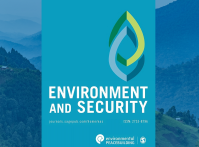-
Adil Najam: Pakistan’s Security Problems Distract From Climate Vulnerabilities
June 18, 2014 By Kate DiamondWhen Pakistan makes the news, more often than not it’s for one of two things: violent extremism or drone strikes. Adil Najam, a Pakistan expert and a lead author for the UN’s Intergovernmental Panel on Climate Change, says those headlines distract from a far more pressing security concern for the country: climate change.
“Pakistan is really a climatically defined country. It’s defined by its monsoons, it’s defined by its mountains.”“Climate change has very real implications on Pakistan in terms of its economics, its agriculture, and really its security,” says Najam, also a professor of international relations and the environment at Boston University, in an interview with the German think tank adelphi. “Unfortunately, right now Pakistan has a lot of foreign policy distractions if you will – issues in Afghanistan, issues of extremism within Pakistan, extreme issues of violence – and in many ways they are distracting from the very real problems, regional problems, of climate.”
“Pakistan is really a climatically defined country. It’s defined by its monsoons, it’s defined by its mountains,” he says. The common thread is water.
Sandwiched between Iran, Afghanistan, China, and India, Pakistan’s environmental policy often doubles as foreign policy. “Climate nowhere acts within national boundaries,” says Najam. “We draw these boundaries on maps, but the carbon molecule doesn’t respect those boundaries, water doesn’t respect those boundaries, climate doesn’t respect those boundaries.”
Take the Indus River: beginning in Tibet, it passes through northern India before flowing into Pakistan. The river basin is the lifeblood of the country, irrigating agriculture that sustains 25 percent of Pakistan’s gross domestic product, 65 percent of its fast-growing population, and 90 percent of its food. India and Pakistan have an agreement over water sharing, but the two old enemies are constantly “bickering and disagreeing about it,” says Najam. India has put dams on a number of tributaries and has plans for more. Pakistan, meanwhile, has diverted much of the river to its northern Punjab Province to supply rapidly growing cities. Downstream farmers and fishermen who rely on the river for their livelihoods are struggling to survive.
These are the kinds of problems that Pakistan should be worried aboutClimate change could complicate life along every stretch of the river. Himalayan glaciers are melting at a quickening pace, and while floods may be the first thing to come to mind, glacial melt can also mean more pollution downstream. At the same time, less snowfall and warmer winters are disrupting the snowmelt that farmers in northern Pakistan rely on. Farther downstream, the monsoon season is becoming more variable, ranging from historic flooding in 2010 to predictions of “extreme drought conditions” this year. Both extremes have wreaked havoc on the livelihoods of rural Pakistanis, many of whom are moving to the cities, where the poorest residents are lucky if they can find drinking water that’s not polluted (in Karachi alone, at least 30,000 die every year from dirty water).
These are the kinds of problems “that Pakistan and the region should be worried about,” Najam says. For now, though, it seems that other crises will continue to overshadow the country’s brewing environmental problems.
Sources: ABC News, Al Jazeera, Dawn, ECC Platform, International Center for Integrated Mountain Development, International Rivers, The New York Times, Thomson Reuters Foundation, World Bank.
Video Credit: ECC Platform.
 A Publication of the Stimson Center.
A Publication of the Stimson Center.






